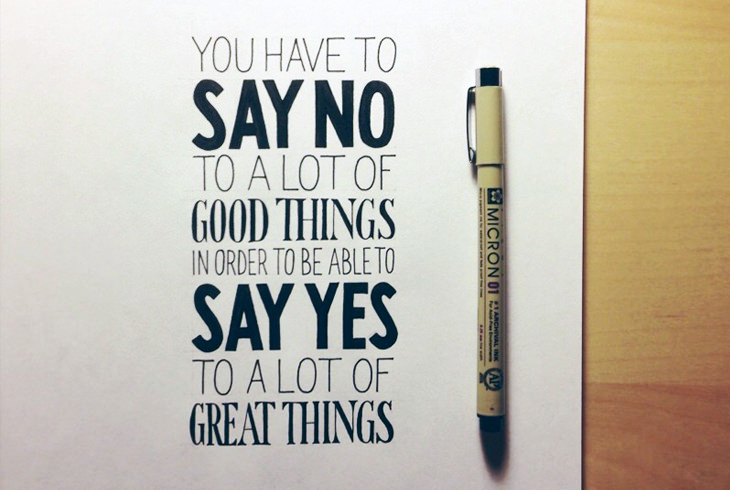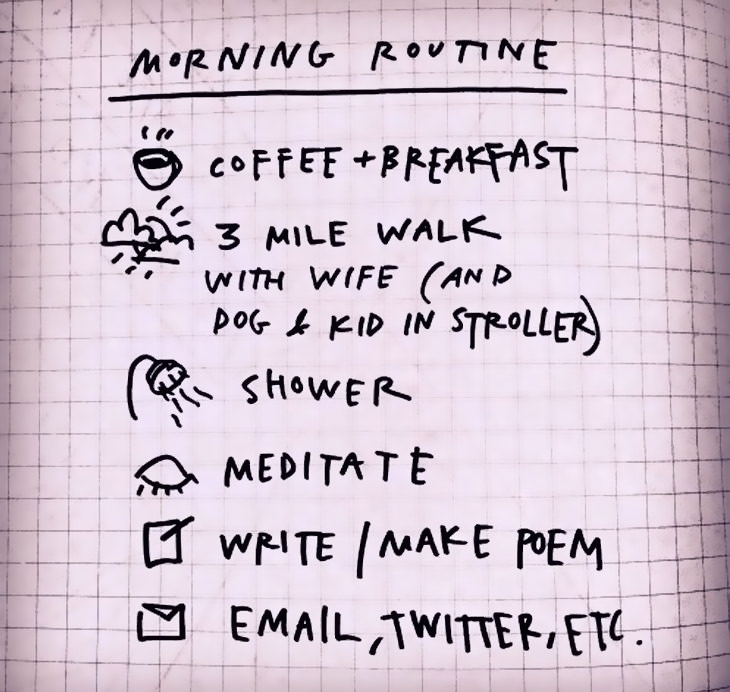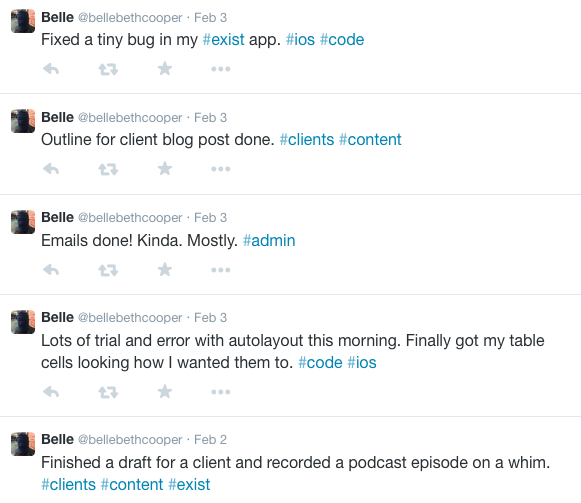How many ideas do you have on your list of side projects you’d like to build someday? My list has 25 items on it right now. They range from courses to books to software projects, but 25 seems conservative to me. I bet you’d have more than that if you sat down and counted them all out.
It’s not a bad thing to want to work on side projects. Craigslist started as a side project. So did Basecamp. So did Instapaper. Look at where they are now. Side projects can be the starting point for building a whole company.
In fact, the Crew team even saved their struggling startup with side projects.
Even if you’re not planning on starting—or saving—a company, side projects can help you raise your profile, learn new skills or technologies, help people, and solve your own problems.
If you’re reading this you probably already know why side projects are a good thing… you just can’t seem to find the time to get yours done. Right? A little project planning can help you find the missing hours in your day.
Pull your novel out of that sock drawer
There’s a reason your list of project ideas is filling up, or your novel is tucked away in a sock drawer not being written. It’s not because you don’t want to work on those things, but how do you find the time?
Like anything, you have to make time for a side project. If you don’t make time, you won’t find it anywhere by accident.
Let’s look at some ways to make time to work on your project and really get it done.
You have a story to tell, pull your novel out of that sock drawer! — “Die Vampire, Die!” from [title of show]
Finding time to work on your side project
You might have to watch less TV, see your friends or family less, play fewer games, or spend less time on your hobbies. You might have less downtime.
Maybe your desk will end up looking like this:
I’m not advocating any of this in particular, but be prepared for some kind of compromise. The time you set aside to work on your side project has to come from somewhere.
For me, not having a TV in my house meant I wasted fewer hours mindlessly staring at a screen (I still stare at my computer screen a lot, I just spend more of my screen time creating than consuming). Having less money in my bank meant I spent fewer nights going out for dinner or seeing theatre. Those hours were then available to spend on creating new things.
It’s up to you where you find the time, and how much you compromise in other areas, but there are a few ways you can make it easier to keep finding the time until you get your product built and launched.
Get up an hour earlier
The classic approach. If you can wake up before the rest of your household (or neighbors) are up, that’s even better. Uninterrupted time alone to work on whatever you want is rare, and should be cherished.
I used to get up at 6am and write for 45 minutes before starting my day. These days I have a different routine, and I take for granted the fact that I could have that morning hour alone to work on whatever I want if I chose to.
When you try it yourself, you’ll probably be surprised at how much you can get done in a short sprint in the quiet morning hours every day.
Oh, and if you’re going to try working on your side project in the morning, take a tip from writer Austin Kleon and leave email and social media until after you’ve done some work:
Put it in your calendar
Cal Newport calendars everything important that he needs to do. If it’s not on his calendar, it won’t get done.
We treat calendars very differently to our task lists. Even with a reminder or a due date, a task is often flexible enough that we can postpone it. A calendar event is the opposite—usually it means we’re expected to be at a particular place at a particular time. We’re beholden to most of our calendar events.
This is why Cal puts important tasks on his calendar. Once he’s scheduled time to do something in particular, he won’t ignore it the same way he might ignore a to do list.
When you’ve found a pocket of time to work on your project, try adding it to your calendar. Make the start and end time definite, and when the event reminder pops up, respect it like you would any other calendar event. Treat it like a meeting with yourself. Be respectful enough to show up on time, like you said you would.
Assigning work to times reduces the urge to procrastinate. You are no longer deciding whether or not to work during a given period; the decision is already made. — Cal Newport
Make it regular
Making time in different pockets throughout your week or month can add up to enough time to get your side project up and running, but it’s hard to keep going when you’re constantly fighting for those chunks of time. It also makes it harder to explain to people who want your time when it’s an irregular compromise you’re making to work on your side project.
Making a regular time and place to work on your project will help you to stick to that commitment and not let weeks go by without finding a chunk of time. And it’s much easier to explain to your friends or family that every Wednesday and Thursday night you’re busy working on your project than it is to throw a different off-limits time at them every week.
Scott Adams, creator of Dilbert, used this approach for developing a regular exercise habit. When he set aside a regular time to exercise, Scott’s wife was more understanding because she expected him to be exercising at the same time each day. Setting up expectations ahead of time can help your friends and family come to terms with your plans.
Make a commitment
I work best under pressure. Even if that pressure is self-induced. I’ve heard this is common for writers, so maybe it won’t apply to you, but if butting up against a deadline or a serious commitment is what lights a fire of productivity under you, apply that to your side project.
One way to put the pressure on is to make a public commitment. Post to Twitter, Facebook, or your blog about your side project. Post your commitment to work on it, and when you aim to launch it. There’s nothing like the fear of embarrassment to get you working.
Justin Jackson is in the middle of doing this right now. For the month of February, Justin is committing publicly to build and launch one new product per week. How’s that for pressure?
Log it
Keeping track of your progress can be a great way to keep the cycle of motivation going. Each time you complete part of your project successfully, log what you did. Even if it’s just a tiny step in the right direction. Looking at those logs can be a great source of motivation when things aren’t going your way later on.
I’ve been using a separate Twitter account to log everything I work on publicly for a couple of weeks. Publishing my logs for anyone to see makes completing each little step feel like a big deal. As an added benefit, it also makes me feel more pressure to get work done so I can log something.
I’ve enjoyed the process so much that my co-founder and I are now working on a side project that will let anyone share public logs of their work-in-progress. How’s that for meta?
One last piece of advice: only take on one side project at a time.
Side projects tend to start with a small scope, but this can make it easy to pile up a stack of unfinished projects as we jump into each one with gusto and let it fizzle out when we lose that initial motivation.
Don’t let your future self down by piling up half-done side projects. Choose one to focus on and commit to launching it before you start anything new.
This has the added benefit of making sure you pick something you really care about before you get started because you know you can’t drop it as soon as a different idea comes along. It also adds to that cycle of momentum, because launching something for real will give you a huge boost of motivation for working on the next project.
Now go make some time, and get working!
Image credits: Breather, Jeffrey Beall, Austin Kleon, seanwes, Stephen Korecky











